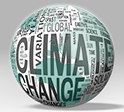
The “$100 000 000 000 per year” question
A mechanism of carbon “bonus-malus” is proposed, where the average emission rate of world countries serves as the anchor: above the threshold, countries should pay a malus, under this level, they would receive a bonus.
Par Christian De Perthuis, Pierre-André Jouvet
This article is part of a special series discussing the economic dimensions of environmental issues ahead of the - COP 21 Climate change Conference held in Paris on 30 November-11 December 2015. Read more about it here.
 |
Christian de Perthuis is a professor of economics at University Paris-Dauphine and head of the Climate Economics Chair. He is the author of several books, including Economic Choices in a Warming World, and as chairman of the Green Tax Committee, designed the carbon tax that was introduced by the French government in January 2014.
|
 |
Pierre-André Jouvet is a professor of economics at the University of Paris-Ouest-Nanterre-la Défense and the scientific director of the Climate Economics Chair. He heads the Economics of Sustainable Development Masters (EDDEE-EEET). |
The implementation of an international climate agreement comes up against the classic problem of “the free rider” (Olson (1965)). For each actor in isolation, there is no direct correlation between the level of effort (s)he agrees to make to reduce emissions and the benefit (s)he will derive in the form of reduced damage. Climate disruption is related to the overall stock of greenhouse gases and this is only weakly correlated with each country’s annual emission flows. In addition, the most severe impacts are distant in time, prompting each actor to pass on the full costs of climate change to future generations. In such a situation, each player's interest is to wait until his neighbours initiate action, the ideal position being that of the free rider, who makes no effort at all, while all other actors undertake to protect the common good. Conversely, no player has an incentive to commit himself unilaterally until (s)he is convinced that others will follow as part of a broader coalition (Nordhaus (2013)).
The United Nations Framework Convention on Climate Change (UNFCCC) asserts the principle of “common but differentiated responsibility” in response to climate change. Here again, the principle of differentiation in the degree of responsibility depending on countries’ level of development is incontrovertible. The UNFCCC provides a binary interpretation of this, set in stone by the Kyoto Protocol, the Convention’s main application text, that divides the world between high-income countries fully responsible for climate change and others exempted (for how long?) from participating in reducing emissions and even from transparently filing their emissions with the UNFCCC.
This view of the world, already questionable in 1992, is totally out of step with contemporary reality. An ambitious climate agreement needs to forge a new coalition between major emitters (see table 1).[1] The promoters of the Kyoto protocol originally intended extending it beyond 2012, by gradually incorporating other countries into the system. On realizing the impossibility of such a process, another type of political agreement was found in 2009 at the Copenhagen conference.
For the first time the emerging economies and the United States committed themselves in Copenhagen to reduce emissions. But this major breakthrough on the extension of the geographical coverage was accompanied by a weakening of the follow-up system: under the Copenhagen architecture, the UNFCCC secretariat becomes a mere rubber stamp, recording the voluntary commitments submitted by countries, without any homogenization of methods or a monitoring, reporting and verification (MRV) system to ensure their implementation. Such an “à la carte” system has hardly any chance of setting emission trajectories in line with the 2°C objective. In terms of economic instruments, the Copenhagen Accord is also a step back compared to the architecture of the Kyoto Protocol. It simply records the financial transfer commitments from North to South ($30 billion a year from 2010 to 1012 and $100 billion a year from 2020), which have little real impact, as neither the origin nor the destination are specified, nor even the use of funds raised.
One of the key issues of the Paris conference can conveniently be summarized by a basic question: how mobilize and distribute the $100 billion/year pledged at Copenhagen?
Finding and distributing $100 billion/year…
In 2013, global emissions of greenhouse gases are estimated at about 50 billion tonnes of CO2 equivalent, or 6.5 tonnes per capita. At a price of $25 per tonne, this would generate some $1,250 billion worldwide. This represents a new rent: [2] the environmental rent associated with the scarcity of the atmosphere in its climate regulation function. On paper, the introduction of an international carbon price can be easily combined with such lump sum redistribution. Imagine that carbon pricing is introduced by means of a flat tax, the proceeds of which would be distributed in an egalitarian way to each country on the basis of the number of inhabitants. In distributive terms, such a mechanism is equivalent to a global cap-and-trade system based on an equal distribution of emission rights per capita. With unchanged emissions, such carbon pricing generates massive income transfers from industrialized to developing countries: a global flow of about $250 billion a year, twice total public development aid. With a contribution of $115 billion, the United States would be the main loser, while India would be the main beneficiary, with an inflow of $135 billion. Such a system would be overwhelmingly approved by those developing countries most reluctant to join a climate agreement, such as India. But at $1,250 billion, the fact is the high-income countries that oppose such a route, in which the introduction of a single international carbon price would be accompanied by a massive redistribution.
From an economic standpoint, this is the Gordian knot of climate negotiations that under the auspices of the United Nations have been conducted continuously since 1992.
Furthermore, despite the entry into force of the UNFCCC, there is no clear and consistent MRV system for greenhouse gas emissions applying to all countries. The technical basis of such a system, through national inventories and the work of the IPCC on emission factors, is available and already covers the emissions of the Convention’s Annex I countries (developed countries and those in transition to a market economy). However, information on most other countries’ emissions remains very sketchy. These, then, are the political obstacles that must be overcome, with the help of ad hoc incentives, if all countries are to be included in a common MRV system. The experience of the Kyoto Protocol has shown the difficulty, if not the impossibility, of making an international carbon price emerge by means of an allowances trading system between states. Indeed, it is not the role of governments to engage in trading. To encourage governments to act in concert, it is essential to work toward a different system of carbon pricing that is both straightforward and transparent.
For these reasons, we recommend dual track carbon pricing to give credibility to a future universal climate agreement (de Perthuis et al. (2015)).
…with a carbon “bonus-malus” system
A “bonus-malus” mechanism, which simultaneously defines the price to pay for emissions above a certain threshold and the use that the money raised should be put to, seems appropriate. In such a system, any country exceeding the average level of emissions per capita would pay a specified amount on every ton emitted above the threshold. Symmetrically, countries that emit less than this benchmark level would receive a compensation calculated on the number of tons saved compared to the world average. By construction, this mechanism would balance from year to year. It would initially benefit countries with the lowest per capita emissions, that in general coincide with the group of least developed countries. Once it is fully operational, the bonus-malus system would encourage all countries to reduce their per capita emissions, in order to reduce their malus or increase their bonus, depending on their initial position.
As with the introduction of a carbon tax at the national level, the question of the rate used to calculate the bonus-malus arises. The cost-effectiveness methods give fairly wide ranges of about 50 to 140 dollars per ton of CO2 equivalent in 2020. With the exception of Sweden, the low end of the range has not been attained in any of the countries that have introduced a domestic carbon price. There is very little chance that a negotiated consensus on these levels can be achieved. It is therefore necessary to aim at a more modest level by negotiating on the basis of two considerations.
- If the objective of including developing countries in the common MRV framework is solely retained, a rate of one dollar per tonne, generative of more than $13 billion on 2011 emission figures, would fund the deployment of an ambitious MRV system in developing countries.
- If the objective is to realize the pledge made in Copenhagen, a rate of $7-8 per tonne of CO2 equivalent would release sufficient resources to transfer $100 billion a year to countries with low emissions per capita. [3]
In the last case, of that $100 billion, a little over $60 billion would come from Western countries and Japan, and just under $20 billion would come from hydrocarbon-exporting countries (Russia and Saudi Arabia in particular) and Asian countries which economies have taken off (China and Korea in particular). The introduction of a bonus-malus system would thus generate redistribution (see for example table 2) among countries in conformity with the principle of common but differentiated responsibility, while getting away from its first interpretation.
A bonus-malus system would encourage developing countries to join a universal agreement as a result of the redistribution it generates. It would not directly introduce into the economic system a carbon price signal capable of changing patterns of production and consumption but it would be a significant signal. The main obstacle in getting the system under way is to convince the governments of donor countries to pay their contribution, a sum in fact very modest compared to the size of their economies.
|
Table 1: Emissions by country
|
|||||||||||||||||||||||||||||||||||||||||||||||||||||||||||||||||||||||||||||||||||||||||||||||||||||||||||||||||||||||||||||||||||||||||||||||||
|
|||||||||||||||||||||||||||||||||||||||||||||||||||||||||||||||||||||||||||||||||||||||||||||||||||||||||||||||||||||||||||||||||||||||||||||||||
|
Source: International Energy Agency
|
|||||||||||||||||||||||||||||||||||||||||||||||||||||||||||||||||||||||||||||||||||||||||||||||||||||||||||||||||||||||||||||||||||||||||||||||||
|
Figure: Effect of the base year for the bonus-malus system (1990-2011) .png) Source: Climate Economics Chair based on World Resources Institute data (2014).
Note: Australia, Belarus, Canada, USA, EU-28, Iceland, Japan, Norway, New Zealand, Russia, Switzerland, Ukraine. OPEC countries: Algeria, Angola, Saudi Arabia, Ecuador, United Arab Emirates, Iraq, Iran, Kuwait, Libya, Nigeria, Qatar, Venezuela. Emerging countries: South Africa, Argentina, Brazil, China, South Korea, India, Mexico, Singapore, Turkey.
|
|||||||||||||||||||||||||||||||||||||||||||||||||||||||||||||||||||||||||||||||||||||||||||||||||||||||||||||||||||||||||||||||||||||||||||||||||
| Table 2: Redistribution effects of a bonus-malus system (excluding forests and agriculture) on the basis of a $100 billon transfer or $7.5 per tonne of CO2 (2011emissions) | |||||||||||||||||||||||||||||||||||||||||||||||||||||||||||||||||||||||||||||||||||||||||||||||||||||||||||||||||||||||||||||||||||||||||||||||||
|
|||||||||||||||||||||||||||||||||||||||||||||||||||||||||||||||||||||||||||||||||||||||||||||||||||||||||||||||||||||||||||||||||||||||||||||||||
|
Source: Climate Economics Chair based on World Resources Institute data (2014).
|
References:
Bovenberg, A.L., Goulder, L.H., Environmental taxation, Auerbach, A., Feldstein, M. (Eds.), Handbook of Public Economics, North Holland, Amsterdam, pp. 1471–1547, 2002.
De Perthuis, Ch., PA.Jouvet, Green Capital. A New Perspective on Growth, Columbia University Press, forthcoming October 2015 (a).
De Perthuis, Ch., PA.Jouvet, Routes to an Ambitious Climate Agreement in 2015, Discussion Paper 2015-71, Cambridge, MassThe Havard Project on Climate Aggreements, 2015 (b).
De Perthuis, Ch., PA.Jouvet, R.Trotignon, B. Solier, B. Meurisse and S. Quemin, Economic instruments and the 2015 Paris Climate Conference: the catalyst of carbon pricing, Climate Economics ChairPolicy Brief N°2014-05, October 2014.
Gonand F. and PA.Jouvet, The “second dividend” and the demographic structure, Journal of Environmental Economics and Management, 72, pp. 71-97, 2015.
Nordhaus, W., The Climate Casino, Risk, Uncertainty and Economics for a Warming World, Yale University Press, 2013.
Olson M., The Logic of Collective Action, Cambridge, MA: Harvard University Press, 1965.
[1] We here count the European Union as a single country, since it negotiates with one voice at the United Nations. Taking into account the emissions of CO2 from deforestation and other greenhouse gases would place Brazil and Indonesia significantly higher in the rankings.
[2] The use of this rent leads to an important literature (see for example Bovenberg and Goulder (2002) or Gonand and Jouvet (2015)).
[3] The form of the transfers generated depends on the reference year and scale of emissions adopted.
|
Retrouvez plus d'information sur le blog du CEPII. © CEPII, Reproduction strictement interdite. Le blog du CEPII, ISSN: 2270-2571 |
|||
|

